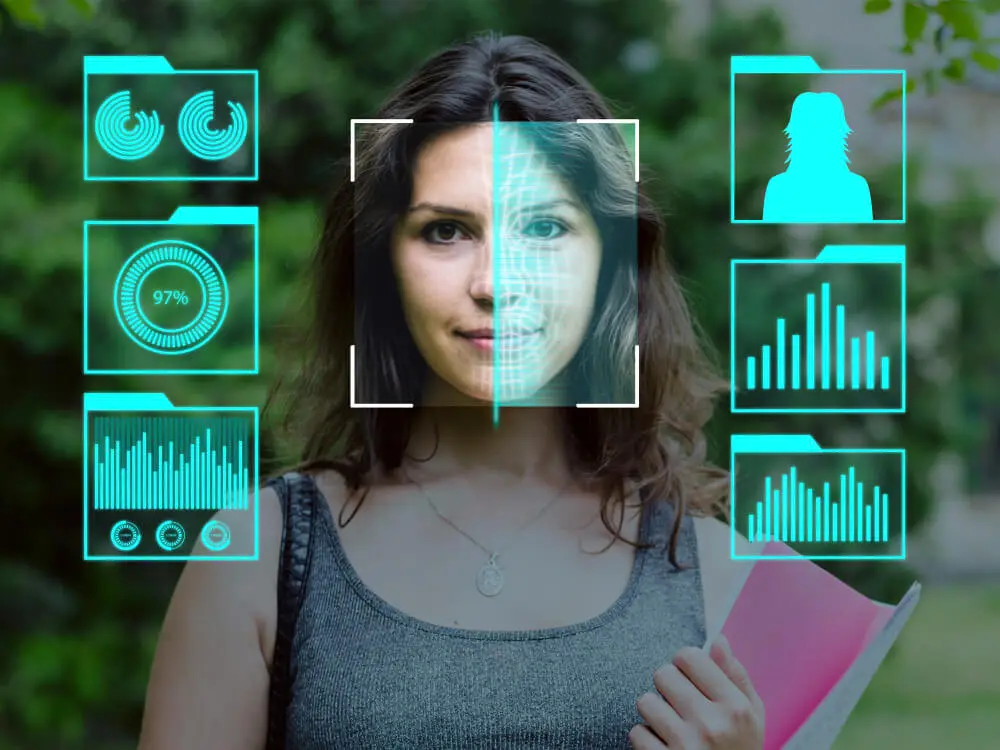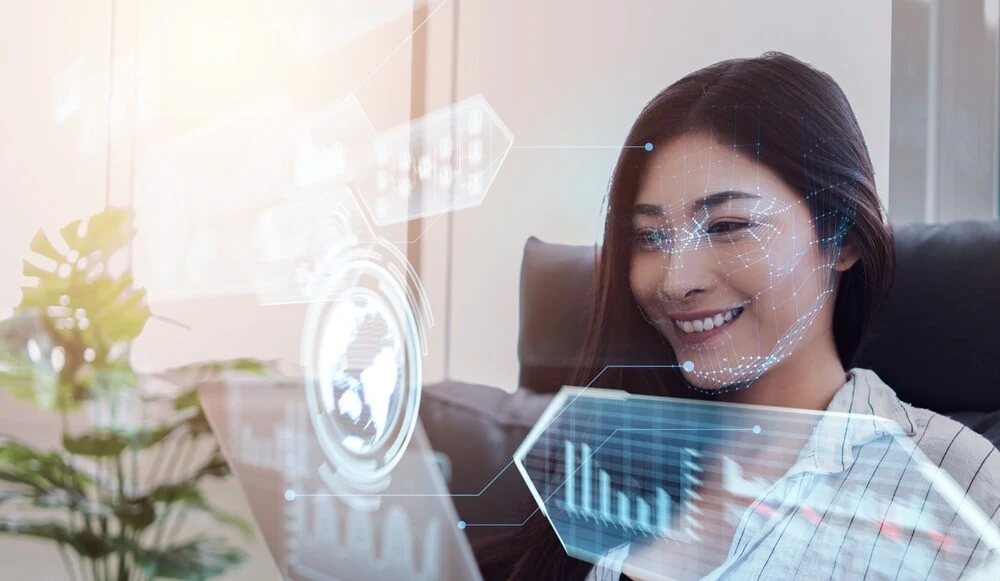Spoofing attacks are no longer limited to simple phishing emails or fake websites. Cybercriminals have escalated their tactics. They now use advanced tech, like AI deepfakes, to extract sensitive user info. These attacks mimic legitimate messages. They trick users into clicking malicious links or revealing confidential data. Companies must adopt strong identity verification solutions to counter these threats. Their sophistication and effectiveness make them a serious threat.
The prevalence of spoofing attacks has risen alarmingly in recent years. A CAIDA study found that, from 2015 to 2017, there were over 21 million attacks on about 6.3 million users. That is an average of nearly 30,000 spoofing incidents each day. This surge shows we need better ways to protect users and businesses from deadly, easy-to-access spoofing.
Understanding Liveness Detection
Liveness detection is a technology. It verifies if biometric data is from a live person, not a static image, video, or spoof. The facial recognition market was worth about $4 billion in 2020. Its rapid growth has increased the demand for liveness detection solutions. This growth reflects a need for better security in online interactions and business.
Active Liveness Detection
Active liveness detection requires users to perform specific actions. They must blink, tilt their heads, or wave their hands. These challenges make it difficult for fraudsters to use pre-recorded videos or static images to bypass the system. Robust anti-spoofing solutions use dynamic, unpredictable prompts. This ensures fraudsters cannot anticipate or pre-program their attacks.
Passive Liveness Detection
Unlike active liveness detection, passive liveness detection works in the background. It analyzes biometric features without needing user interaction. This method examines subtle traits. They include skin texture, blood flow, blink rate, and involuntary movements. Passive detection prevents fraudsters from prepping for the verification process. It does this by eliminating the need for active participation. This offers a seamless and secure user experience.
The Role of 3D Liveness Detection
3D liveness detection enhances biometric accuracy by leveraging depth perception and motion analysis. This technology is especially valuable in onboarding and high-value transactions. The risks of identity theft, money laundering, and terrorist financing are heightened in these cases. 3D liveness detection creates a more secure digital space. It detects fake representations, protecting businesses and users.
Types of Facial Spoofing

Facial spoofing involves using fabricated or manipulated biometric data to impersonate legitimate individuals. Common types include:
- 2D Static Attacks High-quality facial images on a flat surface to simulate a real face.
- 2D Dynamic Spoof Attacks: High-quality images that mimic challenge-response tests.
- 3D Digital Duplicates and Avatars: Deep-learning replicas of high-value, secure entities.
- 3D Static Attacks: Using 3D prints, wax heads, or high-res avatars to impersonate.
- 3D Dynamic Attacks: Real-world uses include silicone masks, holograms, and micro-sculpted biometric masks. They are designed to deceive security systems.
Combating Facial Spoofing with Liveness Detection
Facial spoofing and deepfake fraud pose significant threats to both individuals and organizations. These attacks can extract sensitive info. Criminals can then create fake identities and commit fraud. Liveness detection tech mitigates these risks. It analyzes behavior and faces to tell real users from imposters.
Key Techniques in Liveness Detection
- Challenge and Response: This technique gives users random tasks, like certain gestures. It effectively counters basic 2D deepfake attempts, commonly employed by low-level scammers.
- Advanced detection: Systems analyze depth and subtle movements. They target fraudsters trying to infiltrate large enterprises. These measures help identify anomalies indicative of deepfake technology.
- AI and ML Algorithms: AI and ML are key to improving liveness detection. These algorithms analyze past anomalies. They aim to boost efficiency and adapt to new spoofing methods. AI-powered solutions provide strong protection against various facial spoofing attempts. They do this by learning from new data.
The Evolution of 3D Liveness Detection
3D liveness detection is now vital for secure identity verification. It is essential in industries that handle sensitive data and high-value transactions. By using advanced algorithms and biometric analysis, businesses can detect subtle signs of spoofing, such as:
- Shadow displacement
- Skin texture irregularities
- Micro-expression inconsistencies
These capabilities let companies secure their digital ecosystem. They also provide users a smooth verification experience.

Facial Anti-Spoofing Solutions
We offer a full suite of IDV solutions. These include a top-notch biometric facial verification with strong liveness detection. Our tech uses advanced features to detect and remove deepfakes. Key features include:
- Advanced Detection Measures: Our liveness detection system spots subtle changes, like shadow shifts and skin variations. It uncovers high-quality deepfakes.
- Distortion Analysis: The system checks for visual distortions in images and videos to detect anomalies. These may indicate spoofing attempts.
- 3D Sensory Techniques: These methods check depth and motion. They differentiate between real users and fake identities.
- Skin Texture Analysis: A close look at skin patterns ensures accurate spoofing detection, even in high-res deepfake cases.
Our solutions combine cutting-edge tech with expert human insights. They give businesses unmatched security. We integrate AI with human expertise. This ensures strong protection against facial spoofing. It lets companies streamline their verification processes without losing security.
Advantages of Liveness Detection
Enhanced Security
Liveness detection prevents fraudsters from using fake biometric data to impersonate legitimate users. This protection covers sensitive areas, like financial transactions, account access, and regulatory compliance.
Seamless User Experience
Liveness detection offers both active and passive methods. It accommodates various user preferences. Passive detection, in particular, provides a frictionless experience while maintaining high-security standards.
Scalability
AI-powered liveness detection solutions are highly scalable. They let businesses meet rising verification demands without losing efficiency. Automated systems reduce the need for manual intervention, saving time and resources.
Regulatory Compliance
Liveness detection helps companies comply with global rules, like GDPR and PCI DSS. It does this by ensuring strong identity verification. This compliance safeguards businesses against legal and financial repercussions.
Conclusion
As cybercriminals develop deepfakes and facial spoofing, businesses must prioritize advanced identity verification. Liveness detection, particularly 3D systems, offers an effective defense against these threats. By using AI, ML, and biometrics, companies can secure operations and provide a seamless user experience.
IDV solutions show the power of combining tech and human expertise. By adopting strong liveness detection, businesses can protect against evolving cyber threats. This will ensure a safer digital future for all.